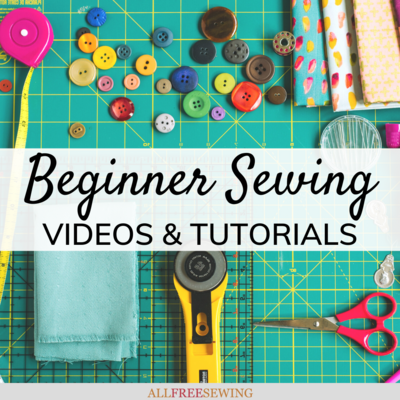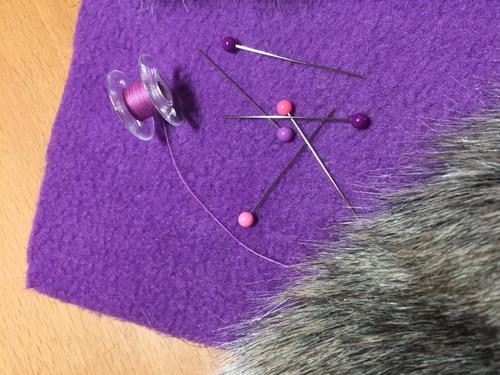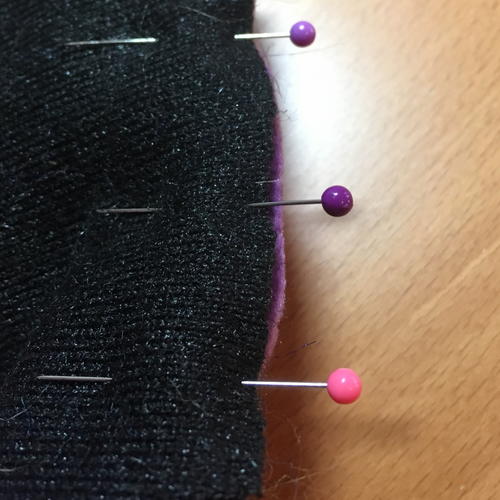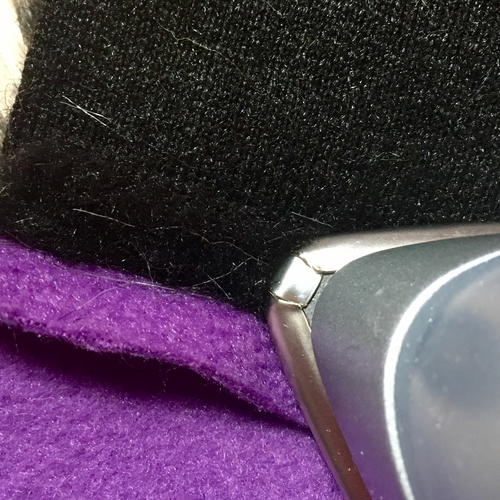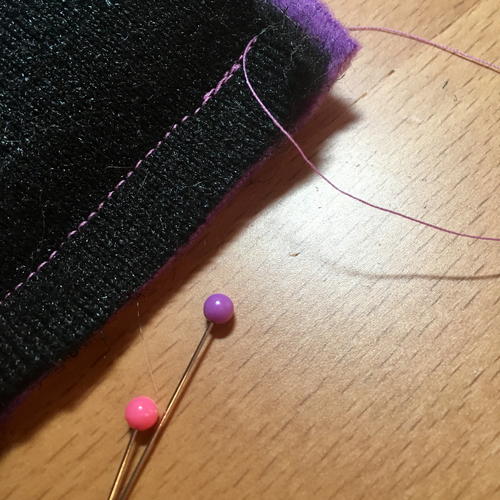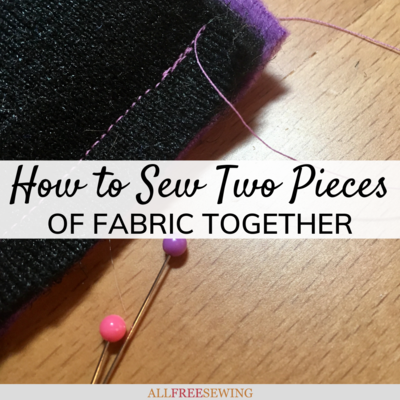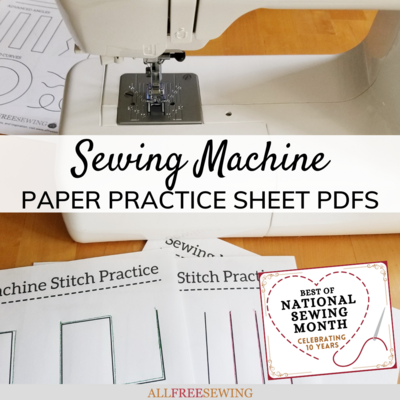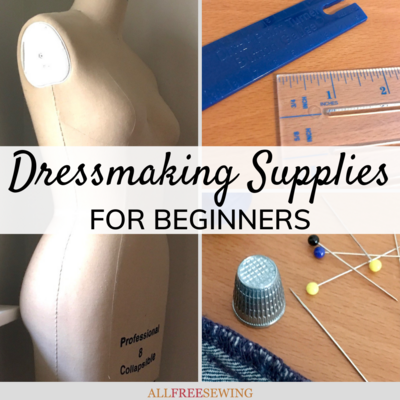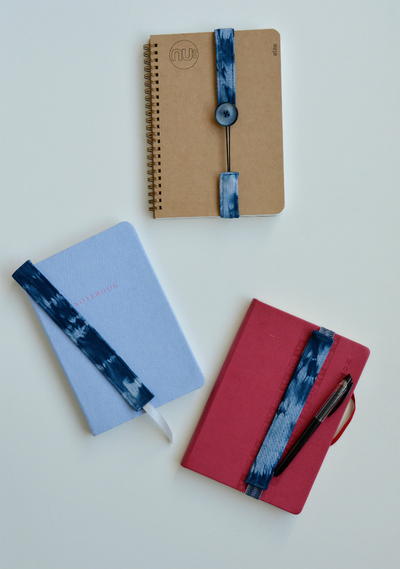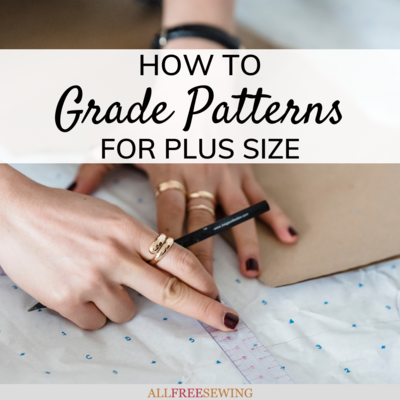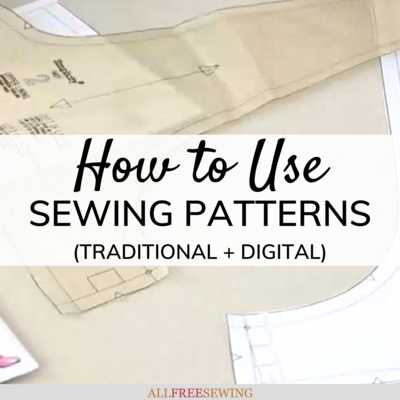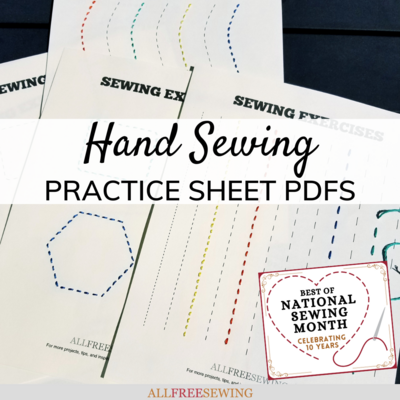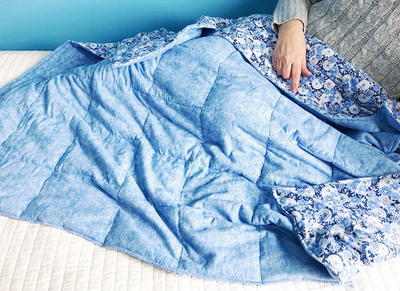How to Sew Two Pieces of Fabric Together: 6 Essential Tips
Sewing two pieces of fabric together may seem simple but there are a lot of minor details. Learn here!

Connecting together two pieces of fabric is the most important function of a sewing machine in your crafting. It’s how almost all clothing is made, as well as household and essential items like duvet covers, pillows and pillowcases, tote bags, and much more.
Learn how to sew two pieces of fabric together with this page of tips and a quick tutorial. Like cutting fabric perfectly, it's essential to properly join 2 pieces of fabric so that they don’t look messy or (even worse!) come apart.
Making sure they are bonded accurately takes some care while pinning, stitching, and ironing your materials, but the quality of your work will be much better in the end. Let’s talk about some ways to make your joining of fabrics go as smoothly as possible (pun intended!).
After you learn everything you need to know about prep and completion of each step, follow along with our quick tutorial for how to sew fabric together. We have provided steps for both machine and hand sewing, so either way, you can get your sewing of two pieces of fabric together complete with ease.
Sign Up For More Free Patterns
Project TypeLearn a Technique
Time to CompleteUnder an hour
Sewn byEither Hand or Machine

Materials List
- Two pieces of fabric
- Pins
- Sewing machine or needle and thread
- Iron
- Scissors
33+ Beginner Sewing Videos and Tutorials is a page that showcases our best sewing videos for beginners along with some of our other favorite tutorials. If you're a visual learner, then this page is essential:33+ Beginner Sewing Videos and Tutorials
How to Sew Fabric Together Seamlessly
Six Essential Tips for Sewing Two Pieces of Fabric Together:
Before you jump in, it is important to recognize the importance of understanding the type of fabric you're working with, the machine settings, pinning, ironing, and more. These tips will help you immensely when you go to sew.
-
Consider the Kind of Materials:
The ease of sewing together fabrics really depends on the kinds of materials you are using in your project. If you’re attaching pieces of the same exact fabric to each other it’s usually more straightforward than working with two very different types, but if you’re using a very slippery or thick style of fabric it can be just as hard as attaching two totally opposite textures and thicknesses. It’s always a good idea to do a smaller test swatch if you aren’t sure how the materials will behave when sewn together.
-
Pin Properly:
Careful pinning is really important when sewing seams and in other situations when you’ll have to join two pieces of fabric. Using pins will help your material stay together, reducing the chance of time-consuming mistakes that you’ll have to re-do and correct. Some crafters prefer their pins to be parallel to the fabric, while others choose to make them perpendicular (especially when working with a thick fabric like faux fur).
Either way, it’s crucial to evenly and gently space out the two pieces of cloth so that it doesn’t gather under the machine. Consider the stretchiness and thickness of what are sewing and you’ll have the best possible result. Also, if your material is delicate and shows pin holes, try to keep the pins within the parts that won’t be seen once finished, and never ever sew over the pins! This can damage your fabric, pins, and machine, so remove them right before you sew over each pinned section.
-
Check for Wrinkles or Folds:
Before you start sewing on your machine, double-check your pinned fabric to make sure you don’t have any folds or uneven areas. Wrinkles in your materials at this point can make for a messy looking seam in your finished result. You can usually go back and try to correct this kind of error if it happens, although it may not completely smooth out.
So it’s much more time-efficient and less frustrating to check it beforehand. I also recommend double-checking that the “right” or “front” sides of the fabrics are facing together when sewing a seam.
-
Use the Correct Machine Settings:
Stitch length, sewing speed, and other machine settings are also important when joining two pieces of fabric. This is another part of the process during which you might want to make sample swatches. The exact settings you will need vary by machine, the kind of fabrics that are being attached, and even the thread you are using.
Adjust the dials if your stitch line is causing your fabrics to wrinkle (from being too tight) or separate (from being too loose, unless it’s just a holding stitch that will be removed later). Sewing at too high a speed can also impact your stitch quality and accuracy, so work at a reasonable setting. Learn about basic machine stitches.
-
Have Patience:
Like most things in life, sewing will produce the best outcome when you have patience. Don’t pin and sew too quickly! Rushing and working at a hectic pace is much more likely to create mistakes, costing you time and even potentially damaging your fabrics or equipment. When joining two pieces of cloth, the sewing machine should be your tool for success and not something that causes any frustrating issues.
-
Iron Carefully:
The last step of connecting two pieces of cloth is typically ironing your seam open (or pressing the fabric in general). Take extra care to press the fabric so that it sits flat, but don’t iron so hard that it shows through the front side. Also, if your fabrics are very wrinkled before you start to sew it’s a good idea to iron them for a much nicer end result. In this situation, iron before you pin them together and sew on the machine.
-
A quick note: Fabrics can also be joined with hand sewing techniques, but if you’re doing a large project it can be time-consuming and the stitches might not hold together as well. If you do plan to attach two pieces of cloth by hand, you may want to still use the above tips regarding pinning, ironing, etc.
Follow these suggestions and soon you’ll be able to join two pieces of fabric with ease!
How to Sew Two Pieces of Fabric Together:
Now that you know the details of each step and how to prepare everything for sewing, let's recap with a quick tutorial. Sewing together fabric pieces is easy with a machine and takes a shorter amount of time. We will note the differences for how to sew two pieces of fabric together by hand vs machine in the quick tutorial below.
-
Line up the 2 pieces of fabric and pin together.
-
Double check that the fabrics are smooth and aligned properly. Adjust as needed before sewing.
-
Sew together.
Machine sewing: Thread your machine if needed. Choose a stitch and speed that works for the fabric you're sewing. Leaving a 1/4-inch or more seam allowance, feed the two pieces of fabric through the machine. Lock the stitch at the beginning for more security. Remove pins as needed while sewing across the fabric. At the end, lockstitch.
Hand sewing: Double thread your needle with thread and knot the end, leaving a tail. Choose a stitch you are familiar with and that's also durable enough to hold for the type of fabrics you are sewing. A simple straight stitch or the stem stitch is recommended. Leave a 1/4-inch or more seam allowance. As you sew, remove the pins as needed. Once you've sewn the entirety of the piece, lock the last stitch to secure. -
Clip the excess threads. If desired, trim the fabric seam allowance carefully for less bulk (you don't want to get too close to the stitching).
-
Iron the seams open or to one side (depending on the thickness of the fabric) to flatten.
Want More?
130+ Sewing Questions Answered >>
Do you have any tips for sewing fabric?
Let us know!
Your Recently Viewed Projects
KLC
May 15, 2019
My tip is that it always seems better to use darker thread over lighter if you don't have an exact match.
Report Inappropriate Comment
Are you sure you would like to report this comment? It will be flagged for our moderators to take action.
Thank you for taking the time to improve the content on our site.

